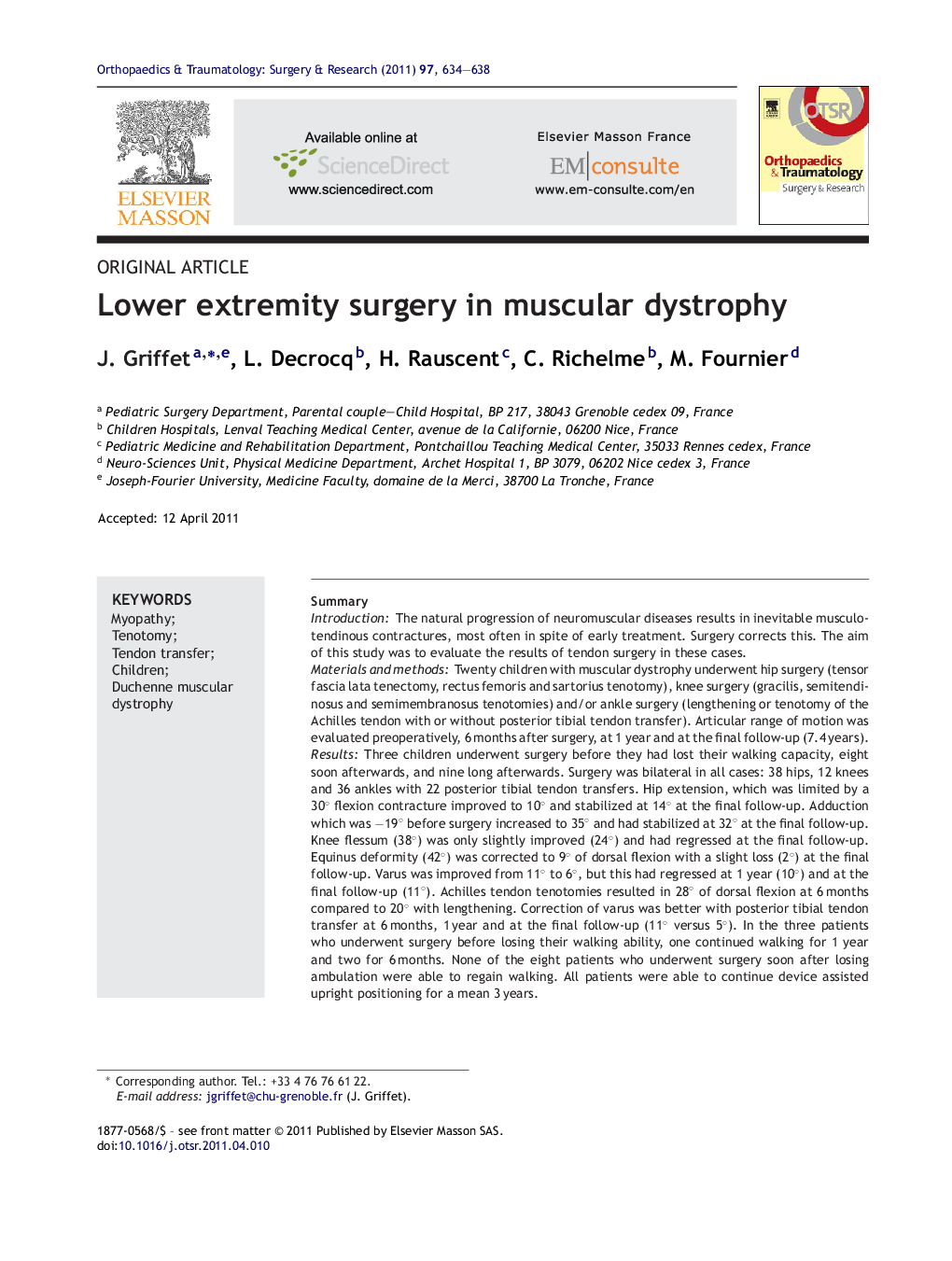| کد مقاله | کد نشریه | سال انتشار | مقاله انگلیسی | نسخه تمام متن |
|---|---|---|---|---|
| 4081911 | 1267614 | 2011 | 5 صفحه PDF | دانلود رایگان |

SummaryIntroductionThe natural progression of neuromuscular diseases results in inevitable musculotendinous contractures, most often in spite of early treatment. Surgery corrects this. The aim of this study was to evaluate the results of tendon surgery in these cases.Materials and methodsTwenty children with muscular dystrophy underwent hip surgery (tensor fascia lata tenectomy, rectus femoris and sartorius tenotomy), knee surgery (gracilis, semitendinosus and semimembranosus tenotomies) and/or ankle surgery (lengthening or tenotomy of the Achilles tendon with or without posterior tibial tendon transfer). Articular range of motion was evaluated preoperatively, 6 months after surgery, at 1 year and at the final follow-up (7.4 years).ResultsThree children underwent surgery before they had lost their walking capacity, eight soon afterwards, and nine long afterwards. Surgery was bilateral in all cases: 38 hips, 12 knees and 36 ankles with 22 posterior tibial tendon transfers. Hip extension, which was limited by a 30° flexion contracture improved to 10° and stabilized at 14° at the final follow-up. Adduction which was −19° before surgery increased to 35° and had stabilized at 32° at the final follow-up. Knee flessum (38°) was only slightly improved (24°) and had regressed at the final follow-up. Equinus deformity (42°) was corrected to 9° of dorsal flexion with a slight loss (2°) at the final follow-up. Varus was improved from 11° to 6°, but this had regressed at 1 year (10°) and at the final follow-up (11°). Achilles tendon tenotomies resulted in 28° of dorsal flexion at 6 months compared to 20° with lengthening. Correction of varus was better with posterior tibial tendon transfer at 6 months, 1 year and at the final follow-up (11° versus 5°). In the three patients who underwent surgery before losing their walking ability, one continued walking for 1 year and two for 6 months. None of the eight patients who underwent surgery soon after losing ambulation were able to regain walking. All patients were able to continue device assisted upright positioning for a mean 3 years.DiscussionHip and ankle surgery can release contractures. In the knees, surgery should be restricted to cases with knee flessum greater than 30°. The best results are obtained with extensive m. tensor fascia lata tenectomy and posterior tibial tendon transfer. Achilles tendon tenotomy results in better recovery of dorsal flexion. Surgery is indicated when contractures are severe and the patient is no longer able to walk. The aim should not be to continue walking but to release contractures, so that the patient can continue assisted upright positioning as long as possible. Especially in cases of asymmetric contractures, surgery can help slow the progression of scoliosis.
Journal: Orthopaedics & Traumatology: Surgery & Research - Volume 97, Issue 6, October 2011, Pages 634–638